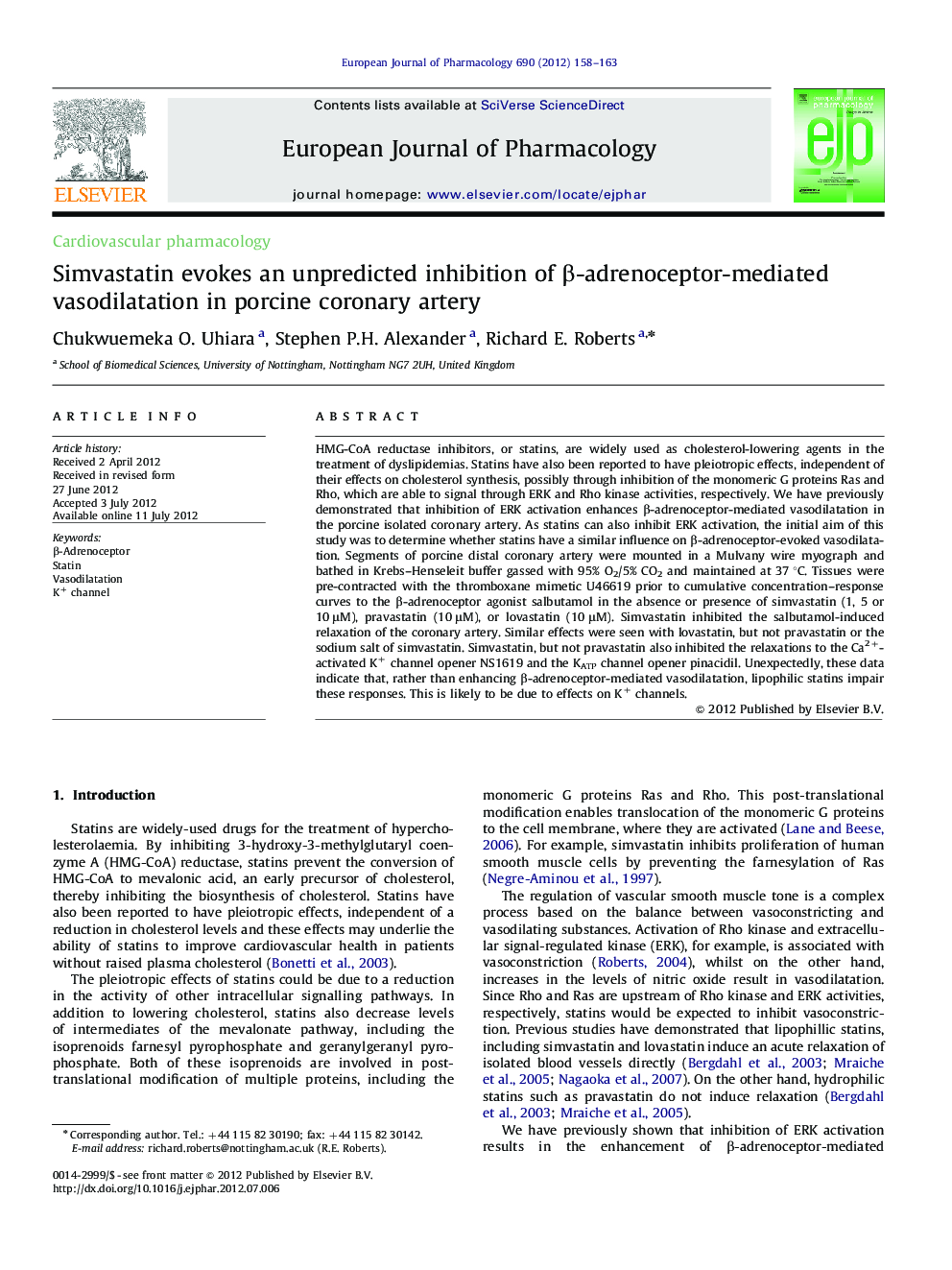| Article ID | Journal | Published Year | Pages | File Type |
|---|---|---|---|---|
| 5829183 | European Journal of Pharmacology | 2012 | 6 Pages |
Abstract
HMG-CoA reductase inhibitors, or statins, are widely used as cholesterol-lowering agents in the treatment of dyslipidemias. Statins have also been reported to have pleiotropic effects, independent of their effects on cholesterol synthesis, possibly through inhibition of the monomeric G proteins Ras and Rho, which are able to signal through ERK and Rho kinase activities, respectively. We have previously demonstrated that inhibition of ERK activation enhances β-adrenoceptor-mediated vasodilatation in the porcine isolated coronary artery. As statins can also inhibit ERK activation, the initial aim of this study was to determine whether statins have a similar influence on β-adrenoceptor-evoked vasodilatation. Segments of porcine distal coronary artery were mounted in a Mulvany wire myograph and bathed in Krebs-Henseleit buffer gassed with 95% O2/5% CO2 and maintained at 37 °C. Tissues were pre-contracted with the thromboxane mimetic U46619 prior to cumulative concentration-response curves to the β-adrenoceptor agonist salbutamol in the absence or presence of simvastatin (1, 5 or 10 μM), pravastatin (10 μM), or lovastatin (10 μM). Simvastatin inhibited the salbutamol-induced relaxation of the coronary artery. Similar effects were seen with lovastatin, but not pravastatin or the sodium salt of simvastatin. Simvastatin, but not pravastatin also inhibited the relaxations to the Ca2+-activated K+ channel opener NS1619 and the KATP channel opener pinacidil. Unexpectedly, these data indicate that, rather than enhancing β-adrenoceptor-mediated vasodilatation, lipophilic statins impair these responses. This is likely to be due to effects on K+ channels.
Related Topics
Life Sciences
Neuroscience
Cellular and Molecular Neuroscience
Authors
Chukwuemeka O. Uhiara, Stephen P.H. Alexander, Richard E. Roberts,
